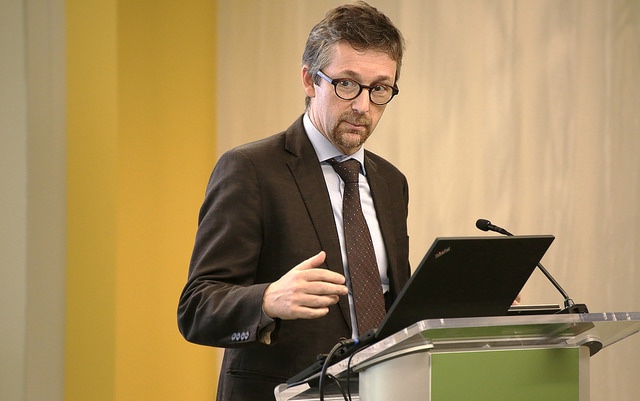In a year when sobering news on the growing number of hungry in the world have shined a light on persistent deprivation, the new UN Food and Agriculture Organization (FAO) report, The State of Food and Agriculture 2017 (SOFA) focuses renewed attention on rural areas, proposing their transformation into arteries of agriculture-led industrial growth to meet the twin challenges posed by hunger and poverty.
“We should invest in rural areas, not because a lot of poor and hungry live here, but that’s where economic opportunities are,” said Andrea Cattaneo, senior economist, FAO, at a recent IFPRI seminar, “How to transform food systems for inclusive growth and poverty eradication,” that explored the FAO report. A majority of world’s poor and hungry still reside in the rural areas, but data over the last 20 years show poverty rates have fallen in both rural and urban areas in East and Southeast Asia, even though Africa South of the Sahara lags far behind.
Cattaneo outlined three key messages from this year’s report: First, economic growth in rural areas has helped millions escape poverty, and going forward it will be a critical factor in ending hunger by 2030. Second, urbanization and dietary changes in both rural and urban areas are transforming the food system, creating both opportunities and challenges. Third, it is important to link the world’s nearly 500 million small farmers to growing domestic markets to reduce poverty. This effort requires an “agro-territorial” approach—a focus in rural development planning, designed to strengthen the physical, economic, social, and political connections between small urban centers and their surrounding rural areas, the report recommends.
The SOFA report picks up where another recent FAO report, State of Food Security and Nutrition in the World 2017 (SOFI) left off, said Vimlendra Sharan, director, FAO Liaison Office for North America. Sharan said rural development is key to hunger eradication, and the latest report argues new global realities have forced us to look at models of development beyond industrialization.
Agro-industry is a crucial factor in bringing about rural transformation and reducing poverty, said Louise Fox, chief economist, United States Agency for International Development (USAID). Although agro-industry is still underdeveloped in Africa, the opportunities it creates going forward will have a multiplier effect, and increase demand for food in the country.
“But it alone wouldn’t do the trick,” said Fox. Population growth is one major obstacle to moving people out of poverty into well-paying jobs. “High fertility rates in Africa South of the Sahara will retard the employment transformation rate. No country had employment transformation with such high levels of fertility,” she said.
World Bank Group Senior Adviser Francisco H.G. Ferreira said that existing policy biases have slowed the growth of rural areas and small towns. “There is a political economy bias in favor of metropolitan cities, which is detrimental to smaller cities and towns,” he said.
Research from rural areas of Africa shows that it isn’t job opportunities primarily driving decisions to migrate from smaller towns and villages to bigger cities, but the availability of public services like schools, healthcare, electricity, and water, Ferreira said. To foster economic growth in rural areas, more investment should go to such services, he said. Building sound policies for rural growth requires decentralized decision-making with adequate safeguards to prevent the effort from being usurped by local elites, and investment in farmers’ human capital, Ferreira said. He also warned of the threat that emerging agro-industry poses to small farmers’ land ownership, and advocated a cooperative model of development.
Astrid Jakobs de Pádua, minister counselor, food and agriculture, German Embassy, said that to avert “land grabbing” by developers, Germany has developed a set of “access to land” voluntary guidelines to increase transparency and accountability and help farmers to know and protect their rights. Various kinds of farmers’ co-operatives have also worked well in Germany in the areas of technology sharing, selling produce in the market, and in the insurance sector.
Moderator Rob Vos, director of IFPRI’s Markets, Trade and Institutions Division, asked the panel how income diversification can be employed as a household strategy to climb out of poverty. That is an important approach to reduce risks, said Paul Dorosh, director of IFPRI’s Development, Strategy and Governance Division—and is more than just crop diversification: “It is about other sources of income from rural non-farm and a chance to link to small urban centers.” Dorosh said that focusing on gender equity and on technological innovations like solar energy and solar cells can also help small farmers to achieve greater income diversification.
Smita Aggarwal is an IFPRI Communications Specialist.







